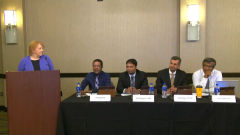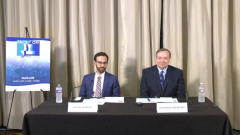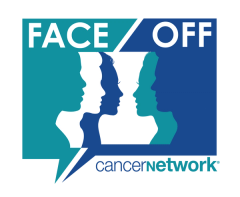
Cross Q&A: Idecabtagene Vicleucel in Relapsed/Refractory Multiple Myeloma
Panelists follow up with questions and comments on the KarMMa-3 study in relapsed/refractory multiple myeloma and consider how idecabtagene vicleucel might fit into real-world practice.
Episodes in this series

Transcript:
Wilson Gonsalves, MD: Excellent presentation. The PFS [progression-free survival] was markedly different. One of the problems I had when I first read the paper that came out … was how would I apply that to my practice right now if it was available today in this population? I don’t know. I struggled with that control arm group that they had, and I want to know whether you all felt the same way, whether you would’ve done something differently. The median PFS in that control group of 4 months is probably lower than what I would expect if we had all the options available to the patients, like a Kyprolis-dara [daratumumab]–type regimen or something like that, and I want to know whether you [all] have the same feelings or thoughts.
Larry Anderson Jr, MD, PhD, FACP: I think one limitation in the design of this study is when it was first designed, this is a dara-exposed population. If you look at the actual patients enrolled, 95% of the CAR T-cell group was dara refractory, 93% of the standard-of-care [group] was dara refractory, and the initial control was a daratumumab-based regimen. It’s set up to fail for the control group, and they later added the other options. This is different compared with, for example, the CARTITUDE-4 study [NCT04181827], where most of the patients were not daratumumab refractory. It’s a completely different population. It’s a little disappointing to not see a big tail on the curve for getting this as an earlier line of therapy. We were hoping to see an extended progression-free survival, at least [a] population that was having a long-term remission. Didn’t quite see that, [what] we expected. Even though it was earlier, many of these patients were similar to patients [from] KarMMa-1 in that they had already become refractory to Darzalex before this started, and the control group, if you look at dara/pom/dex [daratumuab/pomalidomide/dexamethasone] in relapsed/refractory myeloma, has better responses, but this group had already received dara, usually second line, before this study.
Prashant Kapoor, MD, FACP: Larry, I would echo Wilson’s comments about your excellent presentation. I wanted to comment on the PFS rate because this is the first time we’re seeing an intent-to-treat analysis. The PFS rate with CAR T-cell therapy, as you alluded to with KarMMa-1, we were looking at only per protocol analysis in a single-arm study, where patients who had progressed prior to receiving CAR T-cell treatment were already eliminated or omitted from the analysis. This gives us a perspective as to what the baseline PFS going forward would be for these patients who have received 2 to 4 prior lines of therapy at a median of [approximately] a year, but if we were to hypothetically compare this with another modality, which is similar but different in many ways as well, let’s say, bispecifics, with the updated data from the MajesTEC-1 trial [NCT04557098] with the teclistamab, how do you think we would be able to incorporate both these modalities, which are different in many ways, with somewhat similar efficacy?
Larry Anderson Jr, MD, PhD, FACP: As we alluded [to], the progression-free survival is a great advantage over standard of care but not perfect and not necessarily much better than we would expect for the bispecifics [such as] teclistamab. The benefit of this as far as sequencing BCMA-directed therapies or T-cell redirection therapies, placing this in front of a bispecific, would be the data. We have retrospective data now at least showing that if patients have had a prior bispecific, their outcomes are going to be suboptimal with subsequent CAR T-cell [therapy], especially with ide-cel [idecabtagene vicleucel]. Also, if you start out with bispecifics and then save CAR T-cell [therapy] for later, you are going to be on continuous therapy. Weekly is the current label. One of the things [patients] lack the most about the CAR T-cell therapy would be the one-and-done [approach], and then they’re off therapy and not having to go in and do injections every week.
Kebede Begna, MD: One final comment even though I’m not a myeloma expert: Does the time required to manufacture the CAR T-cell therapy sway your choice from the bispecific, but bispecific is one from the shelf?
Larry Anderson Jr, MD, PhD, FACP: There’s a big difference in vein-to-vein time. Generally, it takes about 5 weeks realistically for manufacture of ide-cel compared with bispecifics that are off the shelf. That might take a few days to get insurance approval. Especially those patients who are more refractory and who are rapidly progressing, that would be the patient where I would aim toward a bispecific and not necessarily wait around for CAR T-cell production. Whereas at least in this study, and that gets back to the other point about the intention to treat looking similar in this study, because as an earlier-line therapy, the patients aren’t as refractory, they don’t have explosive relapse typically. These patients are more likely to get to CAR T-cell [therapy], whereas the patients who are very refractory, 5 to 5-plus prior lines of therapy may be more likely to not make it to CAR T-cell [therapy]. The intention to treat may look different in that population.
Transcript edited for clarity.
Newsletter
Stay up to date on recent advances in the multidisciplinary approach to cancer.



































































































